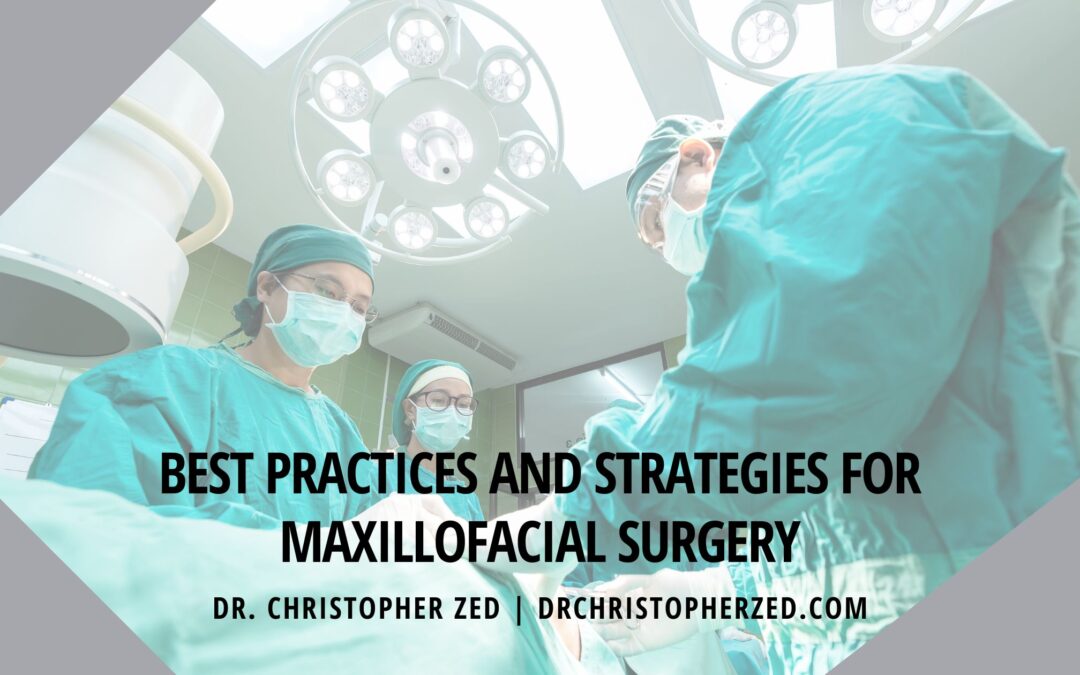Maxillofacial surgery, a specialized field of medicine, encompasses a wide range of procedures involving the jaw, face, and associated structures. From reconstructive surgeries to addressing congenital abnormalities or trauma-related injuries, successful outcomes rely on the implementation of best practices and strategic approaches.
1. Comprehensive Preoperative Evaluation
A thorough preoperative evaluation is fundamental to the success of any maxillofacial surgery. Conduct a detailed medical history review, including any underlying conditions, medications, or allergies. Perform a comprehensive physical examination and order appropriate diagnostic tests, such as imaging studies, to assess the patient’s anatomy accurately. Additionally, consider collaborating with other medical specialists, such as anesthesiologists or oral surgeons, to evaluate the patient’s overall health and potential risks associated with the surgery.
2. Collaborative Multidisciplinary Approach
Maxillofacial surgery often involves complex cases that benefit from a collaborative multidisciplinary approach. Engage in regular communication and coordination with other healthcare professionals, including orthodontists, plastic surgeons, and prosthodontists, to ensure seamless integration of treatment plans. A multidisciplinary team can provide a comprehensive evaluation of the patient’s condition, contribute different perspectives, and collectively devise the most appropriate surgical strategy.
3. Utilization of Advanced Imaging Techniques
Incorporating advanced imaging techniques, such as computed tomography (CT) scans, magnetic resonance imaging (MRI), or three-dimensional (3D) imaging, enhances surgical planning and precision. These imaging modalities provide detailed anatomical information, aid in the identification of critical structures, and facilitate the creation of customized surgical plans. Surgeons can assess the patient’s condition accurately, visualize the surgical site, and anticipate potential challenges, leading to more precise surgical interventions.
4. Preoperative Simulation and Virtual Planning
Advancements in technology have introduced preoperative simulation and virtual planning tools, which allow surgeons to simulate the surgical procedure before entering the operating room. By using computer-aided design (CAD) software or virtual reality (VR) platforms, surgeons can virtually manipulate the patient’s anatomy, plan incisions, and assess the potential outcomes. This approach minimizes the risk of intraoperative surprises, improves surgical accuracy, and enables better communication with the patient about the expected results.
5. Attention to Intraoperative Detail and Precision
During maxillofacial surgery, meticulous attention to detail and surgical precision are paramount. Surgeons should adhere to strict aseptic techniques to minimize the risk of infection and ensure a sterile surgical field. Careful handling and manipulation of tissues, along with gentle retraction, can help preserve vital structures and optimize surgical outcomes. Close monitoring of blood supply and nerve integrity is crucial to avoid postoperative complications. Surgeons should possess the necessary technical skills and expertise in surgical techniques to ensure precise execution of procedures.
6. Postoperative Care and Follow-up
Postoperative care and follow-up are integral components of maxillofacial surgery. Implement appropriate pain management strategies and provide clear instructions regarding wound care, oral hygiene, and dietary restrictions. Regular follow-up visits enable the monitoring of healing progress, early identification of complications, and adjustment of treatment plans if necessary. Effective communication with patients regarding their recovery process and expected outcomes is vital to manage expectations and address any concerns.
By adhering to best practices and employing strategic approaches, maxillofacial surgeons can optimize patient outcomes and ensure successful results. Through continuous improvement and innovation, the field of maxillofacial surgery can continue to advance and provide transformative care for patients.

